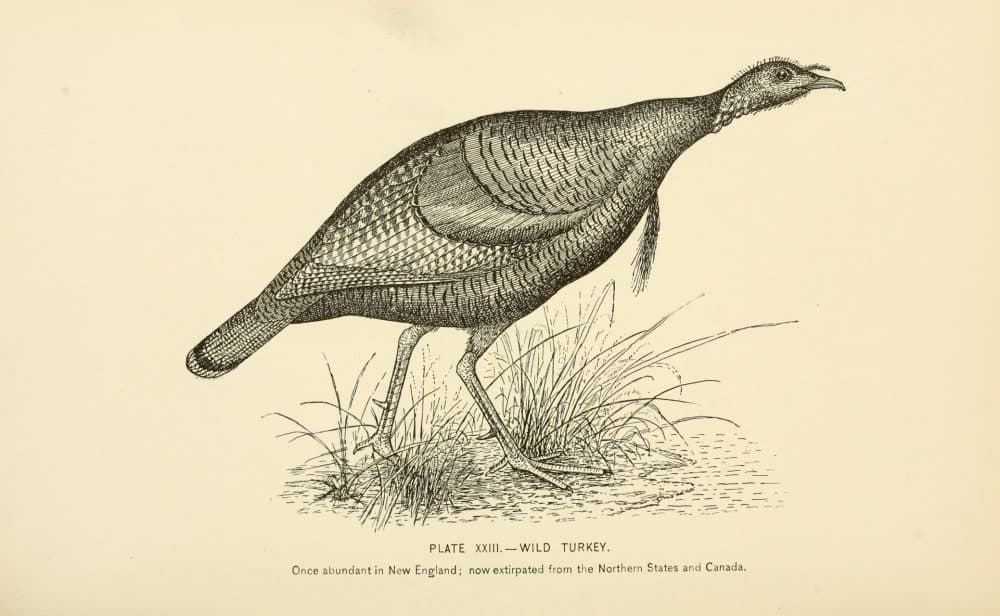Advertisement
A Short History Of The Urban Turkey
Resume
While many of us picked our bird for tomorrow at the market, some New Englanders didn't need to look any further than their backyard.
Urban turkeys, annoying as they may be, are a feat of careful conservation, according to Yoni Appelbaum. He writes in his latest piece for The Atlantic magazine that the Pilgrims triggered the slow extinction of the creature in the Northeast. As he says:
"The last bird known to science was shot, stuffed, mounted, and put on display at Yale in 1847, but locals swore they heard the distinctive calls of the toms for another decade."
So just why do we have so many turkeys hanging out in the city now?
Guest
Yoni Appelbaum, Washington, D.C. bureau chief for The Atlantic. He tweets @YAppelbaum.
More
The Atlantic: Why Wild Turkeys Hate the Wild
- "By 1672, hunters in Massachusetts had “destroyed the breed, so that ‘tis very rare to meet with a wild turkie in the woods.' Turkeys held on in small, isolated patches of land that could not be profitably farmed. But by 1813, they were apparently extirpated from Connecticut; by 1842 from Vermont; and from New York in 1844."